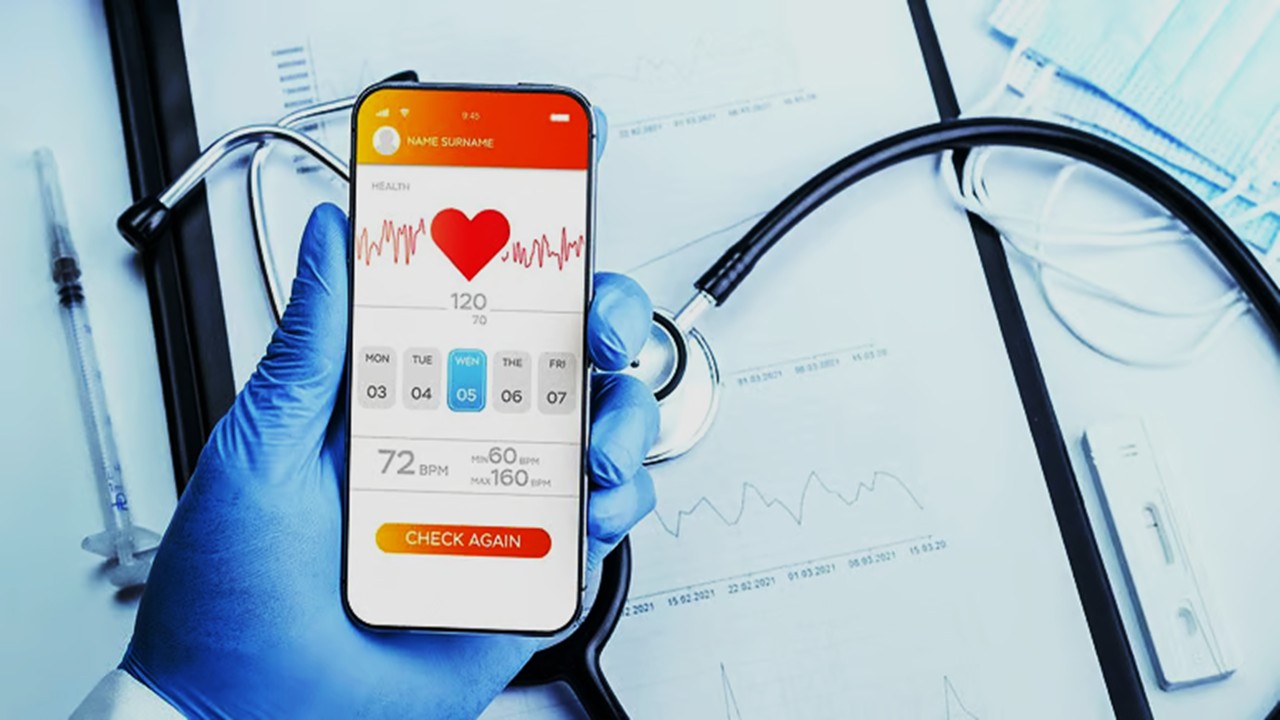The clinical trial landscape is undergoing a quiet revolution as decision theory principles merge with decentralized digital infrastructures, creating adaptive research ecosystems that respond dynamically to emerging data patterns. Gone are the rigid, pre-specified protocols of yesteryear—modern trials now employ Bayesian decision networks that continuously reweight randomization probabilities, multi-armed bandit algorithms that optimize treatment allocations in real-time, and distributed ledger systems that enable secure, transparent decision-making across fragmented research sites. This paradigm shift doesn’t merely accelerate drug development; it fundamentally reimagines how evidence is generated in an era of digital biomarkers, wearable-derived endpoints, and patient-centric trial designs. From adaptive platform trials that seamlessly add new arms to decentralized studies that leverage smartphone-based phenotyping, decision theory provides the mathematical scaffolding for trials that are simultaneously more efficient, more ethical, and more reflective of real-world therapeutic contexts.
The Bayesian Foundations of Adaptive Trial Design
At the core of modern decentralized trials lies Bayesian decision theory—a framework that treats uncertainty as a dynamic quantity to be updated rather than a static hurdle to overcome. Traditional frequentist approaches require fixed sample sizes and interim analysis plans, but Bayesian adaptive designs allow protocols to evolve as evidence accumulates. Trial methodologists emphasize that this is particularly powerful in decentralized settings where digital endpoints generate continuous data streams rather than episodic clinic measurements. A trial for a novel migraine therapy might begin with equal randomization between arms but gradually skew allocation as real-time smartphone-reported pain diaries and wearable-detected photophobia patterns reveal which participants are responding.
The mathematics behind this adaptation involves computationally intensive posterior probability calculations. Each new data point—whether from an electronic patient-reported outcome, a home blood pressure monitor, or a video-captured neurological exam—updates the probability distribution over treatment effects. Modern implementations use variational inference techniques to approximate these posteriors in near-real-time, allowing decision rules to adjust before the next participant is enrolled. The most sophisticated systems go beyond simple efficacy estimates to model entire response surfaces, identifying subgroups where benefit-risk profiles are particularly favorable.
Regulatory considerations add layers of complexity. While Bayesian methods offer flexibility, they require meticulous pre-specification of prior distributions and decision boundaries to maintain type I error control. Hybrid approaches now marry frequentist hypothesis testing with Bayesian decision rules, creating designs that satisfy regulatory requirements while capitalizing on adaptive advantages. The FDA’s recent guidance on complex adaptive designs reflects growing acceptance of these methods, particularly for rare diseases where traditional trials are impractical.
Decentralization introduces both opportunities and challenges for Bayesian adaptation. On one hand, digital data collection provides richer, more frequent measurements to update models. On the other, variability in measurement quality across home-based devices requires careful error modeling. Solutions involve hierarchical models that explicitly account for device-specific noise characteristics, sometimes leveraging blockchain-based device certification logs to inform these adjustments.
The frontier lies in fully sequential trials where every participant’s experience informs the next allocation decision in real-time. Combined with decentralized infrastructure, this could enable global studies that continuously refine treatments based on worldwide response patterns—a far cry from the batch-processed trials of the past.
Multi-Armed Bandits in Digital Trial Optimization
The multi-armed bandit problem—a classic decision theory dilemma balancing exploration of uncertain options against exploitation of known rewards—has found perfect application in decentralized clinical research. Modern platform trials increasingly employ bandit algorithms to dynamically allocate participants across treatment arms, maximizing collective benefit while efficiently identifying effective therapies. Operations researchers note that this approach is particularly suited to digital trials where endpoints are measured frequently and enrollment is continuous.
Thomson sampling, a popular bandit strategy, begins with uninformative priors about each arm’s effectiveness but updates these beliefs after every observed outcome. In a decentralized depression trial, the algorithm might initially assign participants evenly across cognitive behavioral therapy apps, pharmacotherapies, and combination approaches. As digital phenotyping through smartphone interactions and wearable physiology reveals early response patterns, allocation probabilities shift toward better-performing options while maintaining just enough exploration to refine estimates for less-tried arms.
Contextual bandits add another dimension by personalizing allocations based on participant characteristics. A decentralized oncology study could use federated learning across sites to identify which molecular profiles predict response to experimental therapies, then apply this knowledge to steer similar participants toward potentially beneficial arms. The algorithms balance this personalization against the need to collect diverse data for generalizable conclusions—a delicate equilibrium formalized through information gain metrics.
The technical implementation faces unique challenges in decentralized settings. Latency in data transmission from home-based devices requires careful synchronization to ensure allocations reflect recent outcomes. Differential privacy techniques protect participants while allowing necessary data sharing for model updates. Some trials now employ edge computing architectures where bandit models run locally on participants’ devices, syncing only anonymized parameter updates to preserve confidentiality.
Ethical considerations are paramount. While bandit algorithms naturally favor promising treatments, they must maintain equipoise sufficient for meaningful inference. Adaptive randomization boundaries prevent premature convergence on suboptimal arms while response-adaptive randomization schemes ensure later participants have higher chances of receiving beneficial treatments—addressing both scientific and ethical imperatives.
Distributed Decision-Making Through Blockchain Consensus
Decentralized trials inherently distribute authority across sites, participants, and regulators—a governance challenge that blockchain-based decision systems are uniquely equipped to address. Smart contracts now encode trial protocols as executable code that automatically triggers actions when predefined conditions are met, creating a transparent and auditable decision layer. Clinical operations specialists highlight how this mitigates the centralization bias that plagued traditional multicenter trials.
Consider a decentralized trial for a rare genetic disorder. Enrollment criteria, encoded as verifiable credentials on a permissioned blockchain, allow potential participants worldwide to self-screen against eligibility rules without centralized pre-approval. Positive matches trigger smart contracts that coordinate genetic confirmation, consent documentation, and randomization—all while maintaining privacy through zero-knowledge proofs. The system’s consensus mechanism ensures no single entity controls participant flow while preventing Sybil attacks that might distort allocations.
Interim analysis decisions present another compelling use case. Instead of relying on a single data monitoring committee, blockchain-based trials can implement decentralized autonomous organizations (DAOs) where stakeholders vote on continuation rules using tokenized governance. Voting weights might incorporate participants’ risk exposure, investigators’ expertise levels, and community representatives’ perspectives—a more nuanced approach than traditional closed-door deliberations.
The most innovative implementations involve predictive futility analysis. Machine learning models trained on accumulating trial data generate continuous predictions about likelihood of success, with these forecasts immutably recorded on-chain. Predefined trigger rules can automatically pause arms that fall below viability thresholds, while releasing funds to expand promising ones—all without human intervention that might introduce bias or delay.
Challenges remain in balancing transparency with necessary confidentiality. Hybrid architectures now store sensitive clinical data off-chain while recording only cryptographic hashes and decision events on-chain. Multi-party computation allows statistical analyses across this fragmented data without exposing individual records—critical for maintaining trust in decentralized research ecosystems.
Reinforcement Learning for Protocol Personalization
The marriage of reinforcement learning (RL) with decentralized trial infrastructure is creating protocols that adapt not just at the cohort level, but for individual participants. Unlike traditional designs that apply uniform procedures regardless of response, RL-driven trials continuously optimize each participant’s journey based on their evolving data streams. Digital health experts describe this as shifting from population-based to N-of-1 inspired trial designs at scale.
The technical architecture involves framing the trial as a Markov decision process where states represent participant health statuses (inferred from wearable, app, and home device data), actions are protocol decisions (dose adjustments, assessment frequencies, intervention deliveries), and rewards balance scientific knowledge gain with participant benefit. Policy gradients are then optimized to maximize long-term value across these competing objectives.
In a decentralized diabetes trial, the RL agent might learn that certain participants show better glycemic control with more frequent but shorter digital coaching sessions, while others benefit from intensive but sparse interventions. The system personalizes contact schedules accordingly, simultaneously exploring variations to improve its model. Digital twin simulations, running in parallel with the real trial, allow safe exploration of strategies before deployment to actual participants.
The approach shines in managing comorbid conditions. An RL-driven hypertension trial could dynamically adjust protocol focus based on which of a participant’s multiple conditions appears most active at a given time—intensifying blood pressure monitoring during stressful periods flagged by wearable stress metrics while emphasizing lipid management when dietary logs suggest lapses.
Implementation challenges include reward function specification—quantifying how to weigh immediate participant benefit against long-term knowledge gain—and ensuring adequate exploration across diverse participant types. Hierarchical RL architectures now separate participant-level personalization from higher-level evidence generation goals, while inverse reinforcement learning techniques infer unstated preferences from participant engagement patterns.
Regulatory acceptance requires rigorous safeguards against overfitting. Digital pre-certification frameworks subject RL algorithms to simulated trial scenarios assessing robustness across diverse virtual populations before approving real-world use—a form of computational phase I testing for AI-driven protocols.
Game Theory for Participant Engagement Optimization
Decentralized trials live or die by participant engagement—a challenge game theory is uniquely positioned to address through incentive mechanism design. Modern trials apply principles from auction theory, contract design, and cooperative game theory to craft engagement strategies that align scientific needs with participant motivations. Behavioral economists note that effective designs must account for diverse participant types—altruists, reward-seekers, and those motivated by health self-discovery—within a single trial framework.
Tokenized incentive systems illustrate this approach. Participants earn blockchain-based tokens for completing assessments, with token values dynamically adjusting based on trial needs—higher for under-represented demographics or time-sensitive measurements. These tokens might be redeemed for monetary rewards, donated to patient advocacy groups, or exchanged for health insights—creating a participatory economy that sustains engagement.
Repeated game models inform long-term engagement strategies. Rather than treating each interaction as independent, sophisticated systems recognize that participant trust builds (or erodes) over time. Early interactions might emphasize small, guaranteed rewards to establish reliability, while later phases introduce variable reinforcement schedules known to sustain habitual engagement. The algorithms detect when participants approach disengagement thresholds, triggering personalized interventions—perhaps a telehealth check-in or simplified assessment battery—to prevent dropout.
Mechanism design prevents gaming of the system. Peer prediction techniques allow the trial to verify self-reported data consistency across participants without ground truth, while proper scoring rules incentivize accurate reporting of subjective symptoms. These cryptographic techniques maintain data quality in decentralized settings where direct oversight is impossible.
The most advanced implementations incorporate health utility into game design. Participants might allocate personal “attention budgets” across competing trial activities, with the system applying matching algorithms to ensure collective needs are met. This mirrors kidney exchange mechanisms in transplant networks, adapted for the attention economy of clinical research.
Information Geometry for Decentralized Data Integration
The heterogeneous data streams flowing into decentralized trials—from smartphone sensors to electronic health records to wearable devices—require advanced mathematical frameworks to integrate meaningfully. Information geometry, which studies statistical manifolds and their geometric properties, provides the scaffolding to harmonize these disparate data types while preserving their nuanced relationships. Statisticians emphasize that this approach is more nuanced than traditional meta-analysis methods that flatten rich data structures.
The technical implementation involves modeling each data source as a manifold where points represent possible observations and distances reflect statistical dissimilarities. A trial combining continuous glucose monitor data, meal photos, and self-reported stress levels would represent each as distinct but interrelated manifolds. Parallel transport techniques then allow information to flow meaningfully between these spaces—for example, estimating how a pattern in glucose variability corresponds to probable stress states even when direct measurements are missing.
Exponential family distributions provide the mathematical backbone, with their natural parameters forming coordinate systems for these manifolds. This allows decentralized trials to handle diverse data types—counts from symptom surveys, positive-definite matrices from wearable movement correlations, and categorical variables from medication logs—within a unified inferential framework. The geometry naturally accommodates missing data, a constant challenge in decentralized studies where participants engage unevenly across measurement types.
Deep information geometry combines these principles with neural architectures. Manifold-learning autoencoders extract low-dimensional representations from high-frequency sensor data that align geometrically with clinical endpoints. This enables trials to derive meaningful signals from noisy real-world data while maintaining statistical rigor—critical when regulatory decisions hinge on decentralized-collected evidence.
The most profound applications may lie in causal inference. Information geometry provides tools to distinguish mere correlations in decentralized data from causal relationships—a perennial challenge when observational and interventional data mix in pragmatic trials. By modeling intervention effects as flows across statistical manifolds, researchers can better estimate treatment impacts despite the noise inherent in real-world settings.
Topological Data Analysis for Safety Signal Detection
Decentralized trials generate complex, high-dimensional safety data that traditional pharmacovigilance methods struggle to interpret. Topological data analysis (TDA), which studies the shape of data, is emerging as a powerful tool to detect subtle adverse event patterns across fragmented data sources. Safety scientists note that TDA is particularly adept at identifying connected clusters of symptoms that might indicate novel syndromes—precisely the challenge in monitoring diverse participants across geographies.
The methodology begins by representing each participant’s adverse event profile as a point cloud in high-dimensional space, where dimensions capture everything from lab abnormalities to wearable-detected physiology changes to free-text symptom reports. Persistent homology techniques then identify topological features—connected components, loops, voids—that persist across multiple scales of measurement resolution. A cluster of participants showing similar patterns of cardiac arrhythmias, sleep disturbances, and mood changes might form a distinct topological feature warranting investigation, even if no single symptom meets traditional significance thresholds.
Mapper algorithms create simplified graphical representations of these high-dimensional relationships. In a decentralized oncology trial, the resulting graphs might reveal distinct subgroups experiencing different toxicity profiles based on metabolic characteristics inferred from at-home urine tests—insights that could personalize monitoring strategies.
Real-time implementation requires efficient computational geometry. Streaming TDA algorithms now process data continuously as participants report symptoms or devices flag anomalies, updating topological summaries incrementally. This allows safety monitoring boards to visualize emerging risk landscapes dynamically rather than waiting for periodic analyses.
The approach complements traditional statistical methods by uncovering structural patterns that hypothesis-driven analyses might miss. When combined with causal discovery techniques, TDA can help distinguish adverse events likely caused by interventions from those reflecting underlying conditions—a critical distinction in decentralized trials where background health variability is substantial.
Federated Learning for Privacy-Preserving Trial Analytics
The distributed nature of decentralized trials makes traditional centralized data analysis impractical—a challenge addressed by federated learning approaches that bring analysis to the data rather than vice versa. Privacy researchers highlight that this paradigm not only protects participant confidentiality but also enables studies that would otherwise face insurmountable data transfer barriers across jurisdictions.
The technical implementation involves coordinating model training across edge devices—participant smartphones, site servers, and institutional databases—without raw data ever leaving its original location. In a global Parkinson’s trial, each site might train a local model on its participants’ movement patterns captured through smartphone sensors, sharing only model parameter updates for aggregation. Secure multi-party computation techniques ensure no single party can infer others’ data from these updates, while differential privacy adds noise calibrated to prevent reconstruction attacks.
Hierarchical federated architectures accommodate diverse data types. Wearable data might train at the participant device level, electronic health record analyses at institutional nodes, and imaging data at specialized processing centers—with all contributing to an overarching trial model through carefully orchestrated update schedules. The resulting models often outperform centralized alternatives by incorporating data that would otherwise be excluded due to privacy concerns.
Dynamic weighting algorithms address the inherent heterogeneity in decentralized data. Contributions from different nodes are weighted based on data quality metrics and representativeness, with blockchain-based attestations providing auditable quality evidence. This prevents well-instrumented sites from dominating analyses while maintaining statistical rigor.
The most advanced implementations now support federated causal inference—estimating treatment effects across sites without pooling individual records. Techniques like federated propensity score matching enable decentralized trials to assess real-world effectiveness while respecting data sovereignty—a breakthrough for post-marketing surveillance in privacy-sensitive regions.
The Decision-Theoretic Future of Clinical Evidence
The integration of decision theory into decentralized clinical trials represents more than a methodological tweak—it constitutes a fundamental reimagining of how therapeutic knowledge is generated. By treating trials as dynamic information ecosystems rather than static data collection exercises, these approaches create research infrastructures that are simultaneously more efficient, more participant-centric, and more reflective of real-world medical complexity.
From Bayesian adaptive designs that minimize unnecessary exposure to inferior treatments, to game-theoretic engagement systems that align scientific needs with participant motivations, decision theory provides the mathematical language for trials that are as sophisticated in their conduct as they are in their scientific ambitions. The decentralized digital infrastructure now emerging provides the perfect substrate for these methods to flourish, enabling studies that were previously logistically impossible.
As these techniques mature, they promise to blur the boundary between clinical research and clinical practice—creating learning healthcare systems where every treatment decision contributes to generalized knowledge, and where evidence generation is seamlessly embedded in care delivery. The future of clinical research may well be decentralized, digital, and decisively algorithmic—a transformation as profound as the randomized controlled trial’s original advent.
Engr. Dex Marco Tiu Guibelondo, B.Sc. Pharm, R.Ph., B.Sc. CpE
Editor-in-Chief, PharmaFEATURES

Subscribe
to get our
LATEST NEWS
Related Posts

Clinical Operations
Digital Dialogues: The Science of Mobile Apps in Research Communication and Data Capture
The smartphone, once considered a distraction, has become perhaps the most sophisticated instrument in the researcher’s toolkit.

Clinical Operations
Clinical Text Decoders: How NLP is Unlocking Medicine’s Hidden Data Troves
Clinical NLP is transforming medicine’s relationship with its own knowledge—converting decades of accumulated wisdom locked in prose into living, analyzable data.
Read More Articles
Chemical Gale: How Wind Energy is Reshaping Industrial Manufacturing
The integration of wind energy into chemical manufacturing constitutes a fundamental reimagining of process chemistry.
Polarity Alchemy: Strategic Charge Manipulation in Contemporary Drug Design
The future promises tunable therapies with polarity adjustable by light, magnetic fields, or bioorthogonal triggers.













